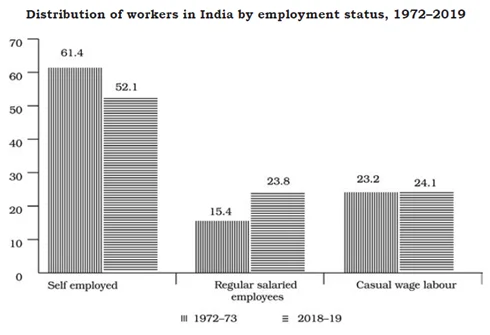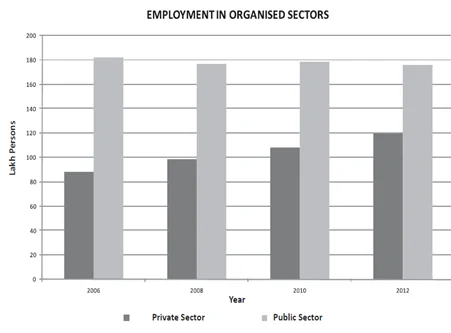![]() December 12, 2023
December 12, 2023
![]() 397
397
![]() 0
0
Industrial society refers to a type of society that emerged with the onset of industrialization, characterized by a transition from agrarian economies to industrial economies powered by technological advancements, mass production, and specialised division of labor.

Distribution of Workers in India by Employment Status, 1972-2019
Need for Industrialisation in India
Industrialization is the process of transforming a society from an agricultural (rural) to an industrial one (specially urban).
Shaping Indian Industry: Exploring the Dynamics of Globalisation, Liberalisation, and Corporate Transformations
Globalisation and liberalisation were the two interlinking phenomena which altered the urban structure of society.
Liberalisation’s Unveiling and Its Implications

Employment in Organised Sectors
Exploring Global Trends and Local Challenges in Labor Markets
India’s Employment Landscape: Service Sector Surges, and the Challenges of Job Insecurity
Land Acquisition Dilemma: Navigating Displacement, Compensation, and Rural Livelihoods
<div class="new-fform">
</div>

Latest Comments